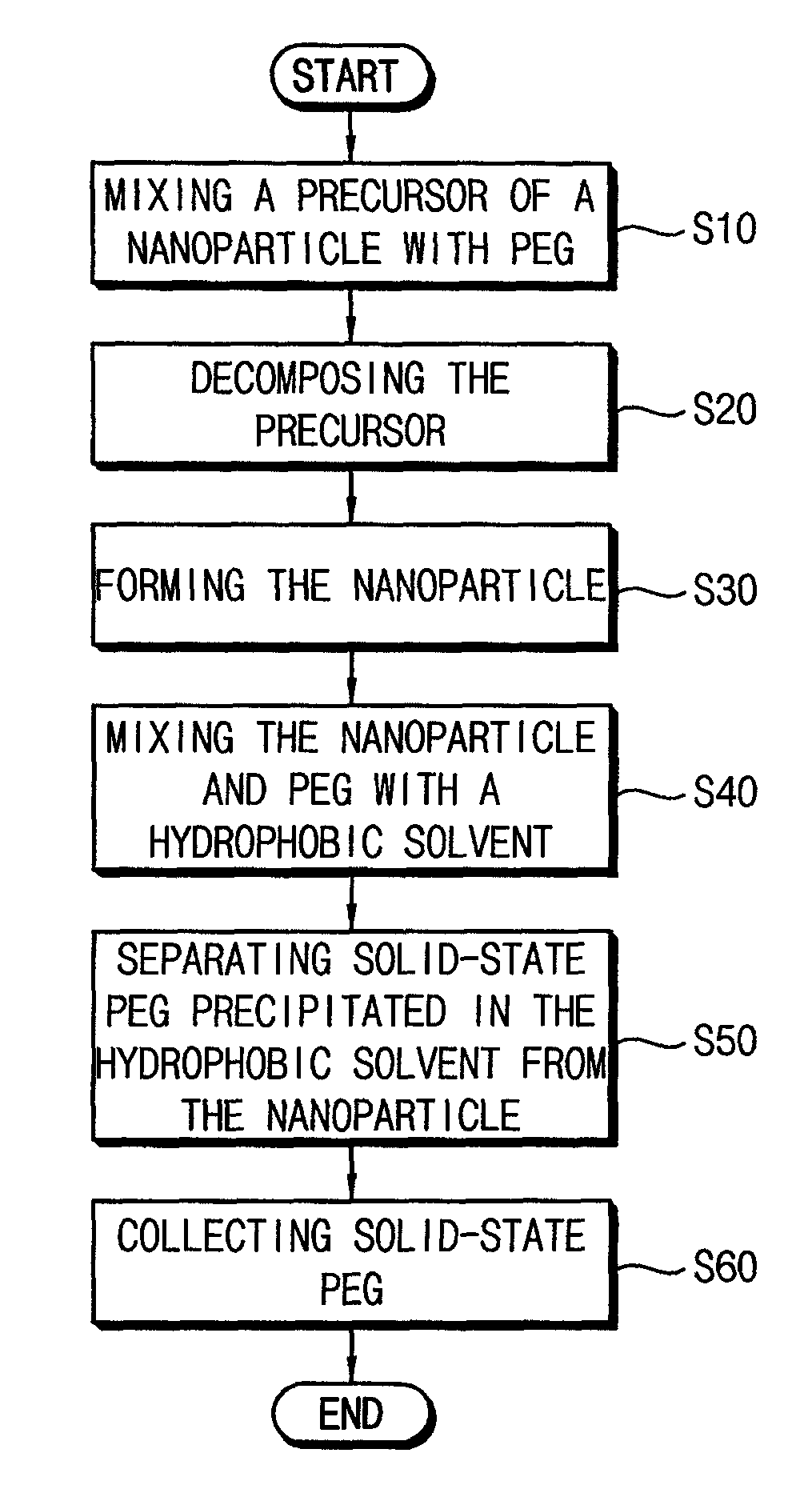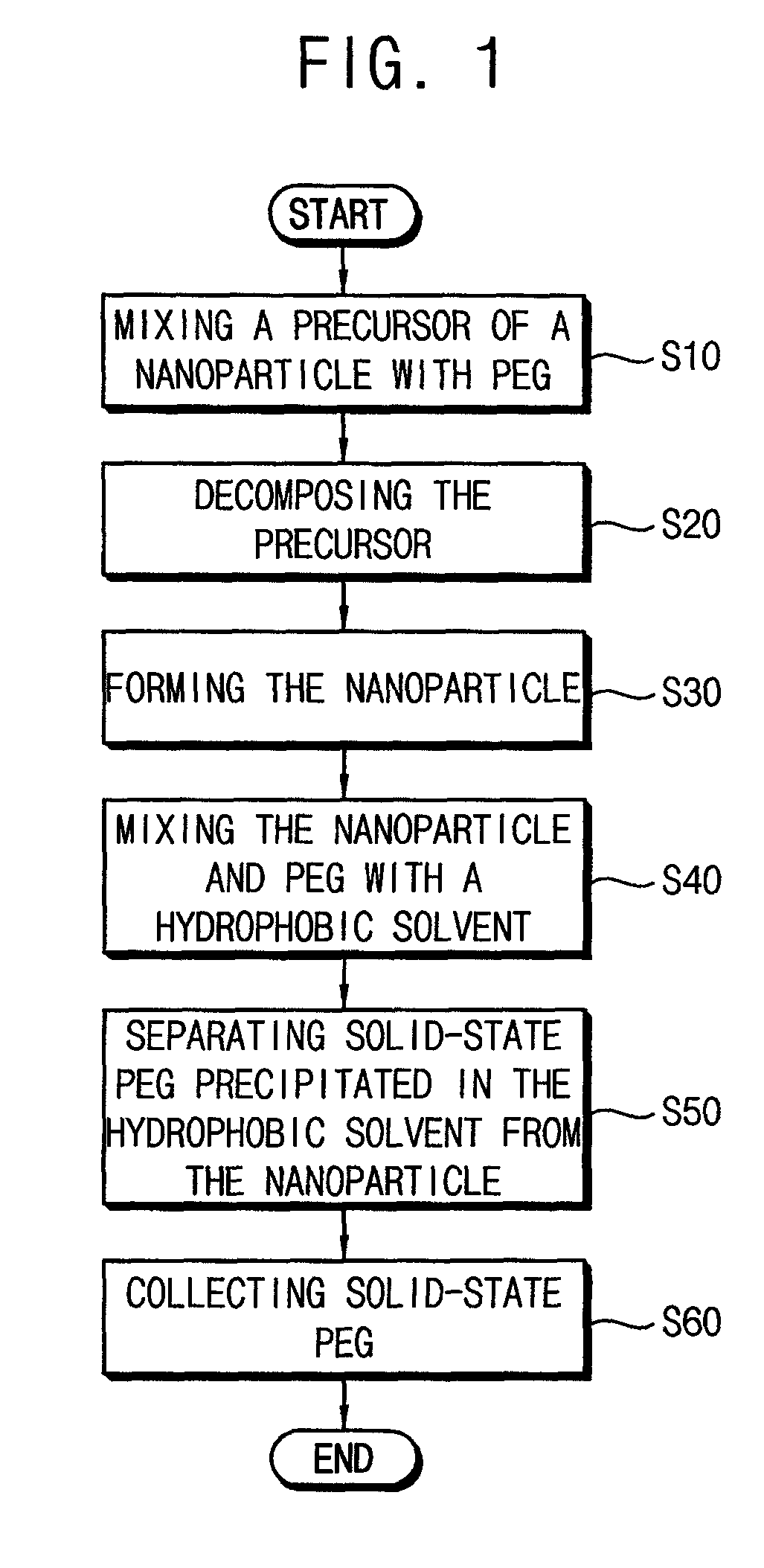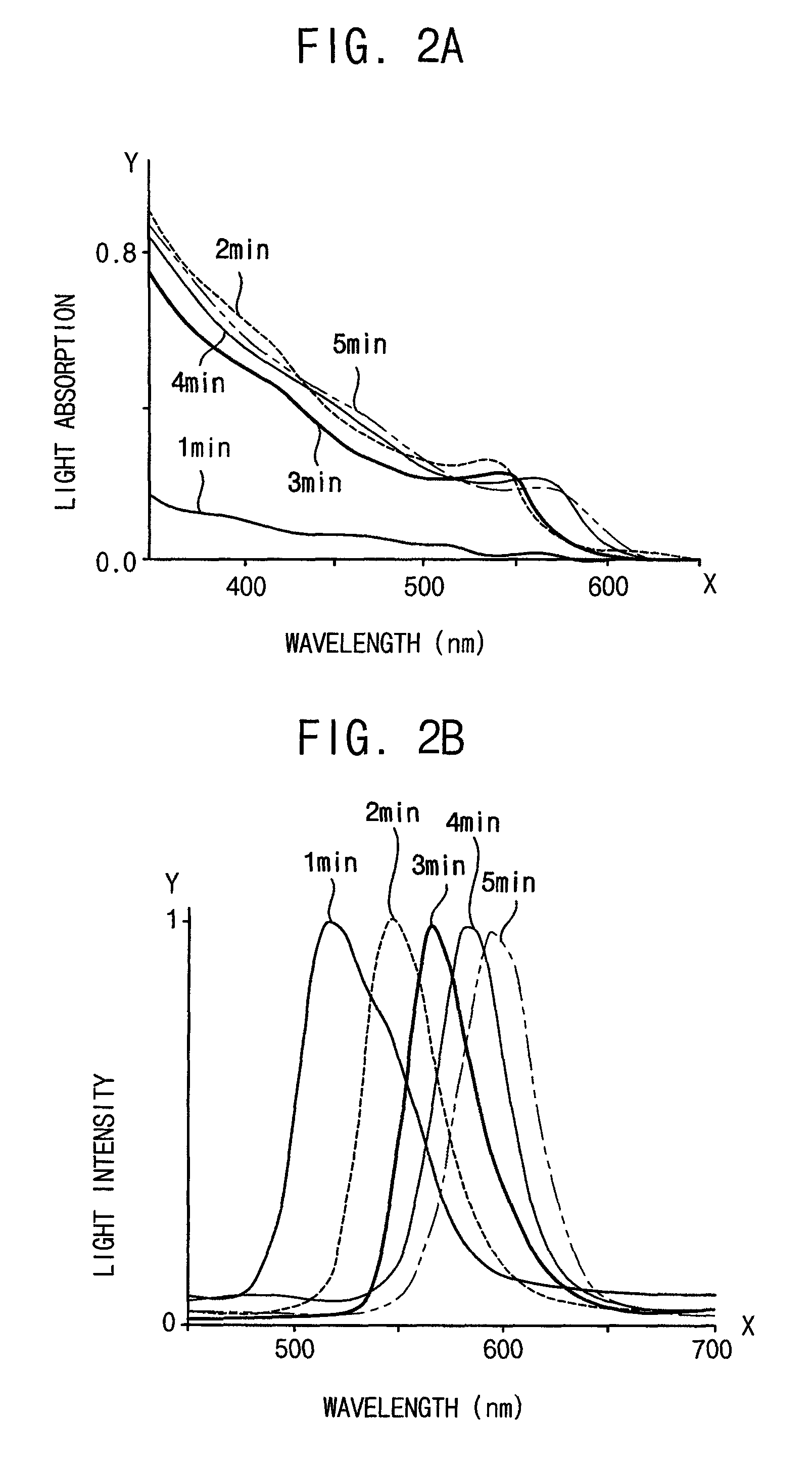Method for manufacturing a nanoparticle, method for manufacturing a light-emitting element having the nanoparticle, and method for manufacturing a display substrate having the nanoparticle
a technology of light-emitting elements and nanoparticles, which is applied in the field of manufacturing nanoparticles, can solve the problems of increasing the cost of manufacturing quantum dots, using expensive apparatuses, and reducing so as to reduce the cost of manufacturing nanoparticles and improve the productivity of nanoparticles. the effect of toxicity
- Summary
- Abstract
- Description
- Claims
- Application Information
AI Technical Summary
Benefits of technology
Problems solved by technology
Method used
Image
Examples
example 1
Manufacturing Cadmium Selenide (CdSe)
[0071]After mixing about 0.2 mmol of cadmium acetate with 1 mL of oleic acid to form a mixing solution, the mixing solution was agitated in a vacuum condition at a temperature of about 100° C., for about 1 hour. About 1 mL of trioctylphosphine (TOP) and a shot of 0.8 mmol selenium were mixed with an agitated mixing solution to form a precursor of CdSe.
[0072]Then, after heating about 4 g of PEG (the weight average molecular weight of which about 3,350) and 1 mL of oleyl amine in a nitrogen gas condition and a temperature of about 200° C. for about 1 minute to about 1 hour, the precursor of CdSe was added in the above solution including PEG and oleyl amine to manufacture CdSe having an average diameter of about 4 nm.
[0073]Obtained products were cooled at a temperature of about 60° C., and hexane was added to the obtained products to separate solid-state PEG by precipitation.
[0074]FIGS. 2A and 2B are graphs illustrating characteristics of the nanopa...
example 2
Manufacturing Indium Phosphide / Zinc Sulfide (InP / ZnS)
[0080]After preparing a mixing solution including indium acetate of about 0.4 mmol and myristic acid of about 1.7 mmol with PEG (the weight average molecular weight of about 3,350) of about 4 g, the mixing solution and PEG were agitated in a nitrogen condition which had a temperature of about 120° C., for about 1 hour. The agitated product was mixed with tris(trimethylsilyl)phosphine of about 0.2 mmol dispersed in TOP of about 0.5 ml at a temperature of about 180° C. to form a precursor of indium phosphide (InP). The precursor of InP was heated at a temperature of about 180° C. for about 3 minutes, and thus InP having the diameter of about 3.7 was formed.
[0081]Then, after a mixture including 0.3 mmol of diethyl zinc dispersed in 1 mL TOP and about 0.3 mmol bis-(trimethylsilyl)sulfide were dropped in the above products which included InP and PEG at a temperature of about 120° C., the above products including the mixture, InP and PE...
PUM
| Property | Measurement | Unit |
|---|---|---|
| temperature | aaaaa | aaaaa |
| temperature | aaaaa | aaaaa |
| temperature | aaaaa | aaaaa |
Abstract
Description
Claims
Application Information
 Login to View More
Login to View More - R&D
- Intellectual Property
- Life Sciences
- Materials
- Tech Scout
- Unparalleled Data Quality
- Higher Quality Content
- 60% Fewer Hallucinations
Browse by: Latest US Patents, China's latest patents, Technical Efficacy Thesaurus, Application Domain, Technology Topic, Popular Technical Reports.
© 2025 PatSnap. All rights reserved.Legal|Privacy policy|Modern Slavery Act Transparency Statement|Sitemap|About US| Contact US: help@patsnap.com



